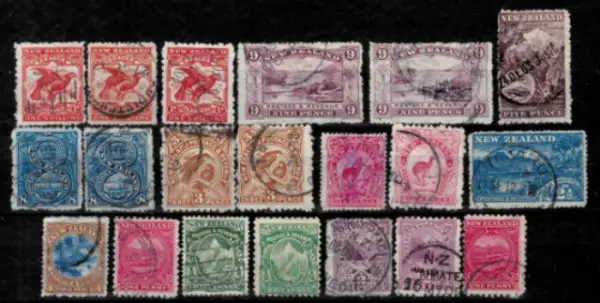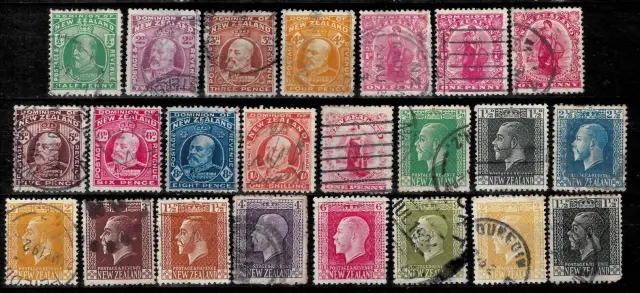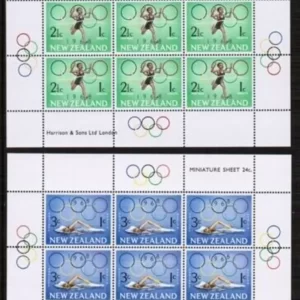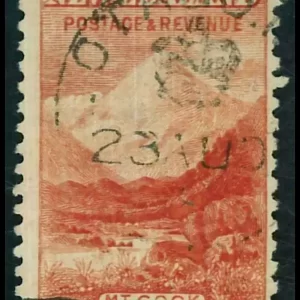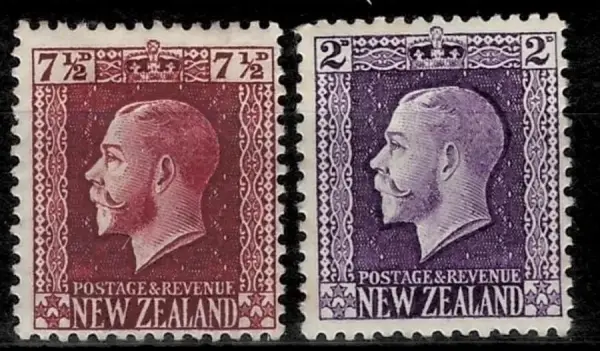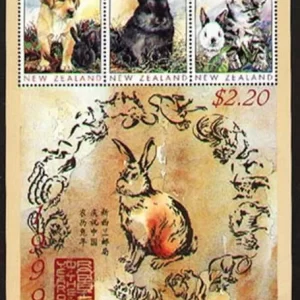New Zealand issued a notable and historically significant series of postage stamps between 1898 and 1900, often referred to as the “1898 Pictorial Issue”. This series holds a special place in philatelic history for being the first pictorial stamps issued by a major country, featuring native landscapes, fauna, and symbols rather than traditional portraits of royalty or coats of arms.
Issued: April 1898, with additional values added through 1900.
Major Features of the 1898–1900 Pictorial Issue:
| Denomination | Image / Subject | Notes |
|---|---|---|
| ½d (Halfpenny) | Lizard (Tuatara) | Native reptile of New Zealand |
| 1d (Penny) | Lake Wakatipu | Scenic South Island lake |
| 2d | Pembroke Peak, Milford Sound | One of NZ’s iconic landscapes |
| 2½d | Landing of Captain Cook | Historical depiction |
| 3d | Huia bird | Now-extinct native bird |
| 4d | White Terrace (Te Tarata) | Natural wonder, destroyed in 1886 eruption |
| 6d | Kiwi | National bird of New Zealand |
| 8d | War Canoe (Waka) | Māori cultural image |
| 9d | Tomoana Meeting House | Māori heritage |
| 1/- (Shilling) | Mount Cook | Highest mountain in NZ |
| 2/- | White Island (Volcano) | Active volcanic island |
| 5/- | Queen Victoria | Only traditional portrait in the set |
🌿 Key Historical Significance:
- Design Innovation: Unlike earlier stamps dominated by royal portraits, these stamps highlighted New Zealand’s natural beauty, cultural heritage, and unique wildlife.
- Cultural Inclusion: Included Māori art and scenes, a significant shift in colonial representation.
- Production: Originally printed by Waterlow and Sons (London), then later some values reprinted by The Government Printing Office (Wellington).
- Color & Perforation Variants: There are multiple printings, with differences in perforation, watermark, and shades, making it a rich area for collectors.
Sample Stamps:
- 3d Huia: A black-and-white bird perched on a branch, now extinct—highly symbolic.
- 6d Kiwi: Depicts the flightless nocturnal bird under foliage.
- 4d White Terrace: Shows the famed pink-and-white terraces, lost in the Mount Tarawera eruption.
- 2½d Landing of Captain Cook: A classic historical narrative stamp.

